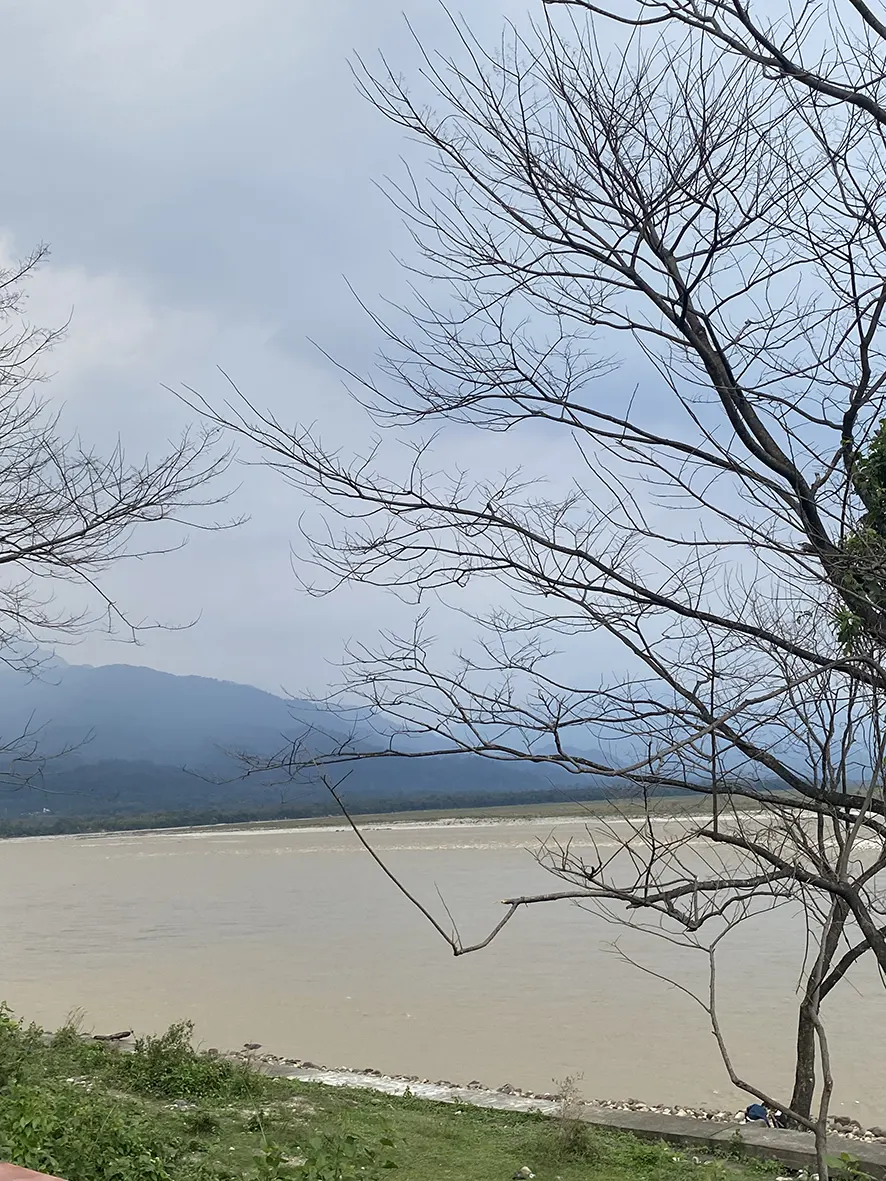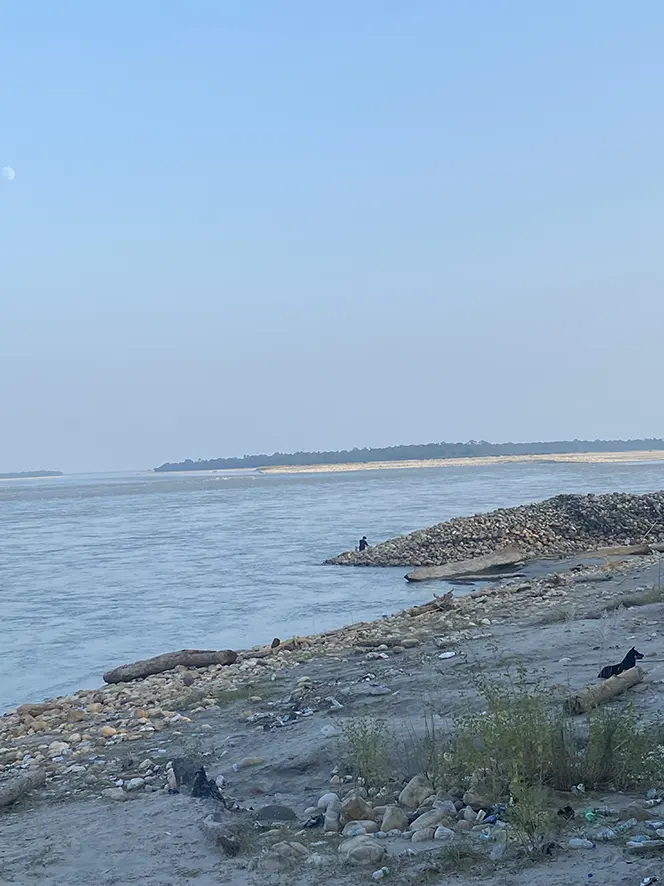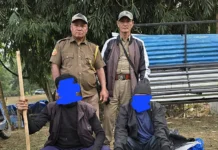Monday Musing
[Tongam Rina]
While the revered Tibetan spiritual head, His Holiness the Dalai Lama has not specifically spoken about hydropower, he has often talked about the need to protect the environment in the Tibet plateau, known as the third pole.
“…many of the rivers which flow through large areas of Asia, through Pakistan, India, China, Vietnam, Laos, and Cambodia – rivers such as the Yellow River, Brahmaputra, Yangtse, Salween, and Mekong- all originate in Tibet. It is at the places of origin of these rivers that large-scale deforestation and mining are taking place. The pollution of these rivers has a drastic effect on the downstream countries.”
The waterways from the Tibetan plateau feed nearly 40 percent of the world’s population.
“The Tibetan plateau needs to be protected, not just for Tibetans but for the environmental health and sustainability of the entire world,” he has said.
But his words have not resonated with the Chinese government, which has occupied his land; nor with India, where he has been forced into exile; nor with his followers in Arunachal, where he commands major respect and devotion.
 On 15 July, 2025, the principal secretary to the prime minister of India scheduled a meeting on the implementation of the Upper Siang Multipurpose Storage Project, also called the Siang Upper Multipurpose Project (SUMP).
On 15 July, 2025, the principal secretary to the prime minister of India scheduled a meeting on the implementation of the Upper Siang Multipurpose Storage Project, also called the Siang Upper Multipurpose Project (SUMP).
The points of discussion were the progress at drilling sites, the status of the NHPC’s communication strategy, the status of the model village & livelihood programme, and the status of the 600 MSL alternative road and new township.
While Delhi is planning model villages, towns, and livelihood options, Siang valley has been steady in its opposition to the 11,000 mw hydropower project. There is no clarity yet on the progress of the pre-feasibility report (PFR) study which sparked major protests. Amidst the deployment of central armed security personnel for preparation of the report, a large number of villagers under the Siang Indigenous Farmers Federation (SIFF) have opposed the study, the deployment, and the government’s signing of MoUs with sections of the villagers for undertaking the project.
On 19 July, one of the Chinese government mouthpieces, Xinhua, reported:
“Chinese Premier Li Qiang announced the start of the construction of a hydropower project in the lower reaches of the Yarlung Zangbo river,” with a groundbreaking ceremony in Nyingchi city at the dam site of the Mainling hydropower station. According to the report “the project will consist of five cascade hydropower stations, with a total investment estimated at around 1.2 trillion yuan (about 167.8 billion US dollars).”
The claim to the Siang river has begun at a pace only warring countries would dare to indulge in, spurred on by rabid nationalists.
India and China have only recently resumed interactions after the border escalation in 2020. But with frosty diplomatic relations being the norm between the two countries, one can never be sure when the mood might change. China had stopped sharing hydrological data with India following border tensions, and it is yet to be resumed, though it has been the topic of discussion between the two nations. In a written response to China commencing the construction of a mega dam project on the lower reaches of the Yarlung Tsangpo river, the government informed Parliament that it is being discussed “under the ambit of an institutionalised expert-level mechanism, which was established in 2006, as well as through diplomatic channels…”
The discussion figured in the recent visit of the external affairs minister to China in mid July for the SCO foreign ministers’ meeting.
The information-sharing on the Siang started in 2002, under which China shared data from May to October, which enabled India to prepare for disaster mechanisms in Arunachal and Assam, as Siang is prone to floods and turbidity. There has been no sharing of hydrological data since June 2023, even though the five-year agreement was set to expire the following year.
Whether there will be a resumption in sharing the crucial data during the monsoon months remains to be seen. Meanwhile, the Arunachal Pradesh government has been agog with its hydropower ambitions.
The government led by Chief Minister Pema Khandu has placed major emphasis on hydroelectric development in the state. However, the move has divided opinion in the state. Many question whether Arunachal should pursue such an aggressive hydroelectric trajectory, especially given the devastation that similar projects have caused in other hill states like Sikkim, Himachal Pradesh, Uttarakhand and even in parts of Arunachal itself, while others see hydropower as a route to economic self-reliance.
In one of his social media posts, the chief minister stated:
“With 56,000 megawatts of hydro potential, Arunachal is rising – not only as the hydro capital of India, but as a beacon of how natural beauty and modern progress can walk hand in hand.”
Thirteen new projects, totaling 15,000 mw, are planned over the next three years. The state has terminated dozens of projects previously awarded to private power developers, including Jindal and Reliance. Control of the land and the rivers has now been handed over entirely to public sector undertakings.
Among these is the estimated 2,880 mw Dibang project, touted to be India’s largest, featuring a 288-metre-high concrete gravity dam in a Zone 5 seismic region, the most earthquake-prone classification, raising further concerns.
On the Siang dam, the chief minister has often flip-flopped in the face of mounting opposition. From using violence to completely ignoring the protests, Khandu has tried all the tricks in the book to get the people to relent, while repeatedly stating that the project would only proceed with their consent.
In his latest, has also described China’s upstream activities as an existential threat to both local tribes and the fragile ecology – calling it more dangerous than any military threat. He calls it a potential water bomb that would devastate the Siang region and endanger communities were China to release water.
Therefore, the SUMP is the Indian government’s response to China’s project and for water security and mitigating floods in the downstream, according to them.
The SIFF isn’t amused by any of the development upstream in Tibet or downstream in Arunachal, as it fears dislocation of people and environmental destruction affecting 27 Adi villages.
Faced with unrelenting opposition, the government has started using coercion through the deployment of forces and targeting of gaon buras and buris, and vocal voices, including activists like Bhanu Tatak, Ebo Milli, and others, cajoling through offers of compensation to the villagers and signing MoUs with the villagers of Pangkang (Kumku), Riga and Riew, signalling their consent to the project.
The latest measure of signing the MoU with the villagers is important and a move that will make or break the government’s plan on Siang because it will split the people into two opposing camps: those who are opposed and those who are in favour.
While the Dibang project was easier due to a smaller population and available land, the Siang project may face a more difficult journey. The potential consequences are huge and the population is large. The project cannot proceed without the displacement of thousands of indigenous people.
Compensating with money for land is not adequate or equivalent. The state is already home to climate refugees from Bangladesh and internally displaced Arunachalis because of infrastructural development as well as the hydro dam.
What is the next move, with geopolitics dictating the entire existence of a river and the indigenous communities that live near it? The journey for Siang and its people has not been an easy or calm one. Uncertainty has been the norm over the last four decades or so, with the last 20 years being even more pronounced, as China has started putting into action what it had been planning after the 1962 Sino-India war.
It is not going to be easy for the people, as India, as a riparian country, will act too in the name of the security of the nation, even if it looks like a competitive move, than a rational one and logical one.
The region is prone to earthquakes, and the Siang river has often turned turbid because of it. Earthquakes in Tibet have triggered massive landslides, darkening the Siang river before too.
From announcements of the 10,000 mw by NITI Aayog in 2017 without preparation or ground study, to use of force in 2011-12, and later refusing to engage with those affected by the project, and forced deployment of armed central personnel after the Chinese announcement of the project, Siang has reached the final stage where the government is prompted to finally speaking to the people about the need for the mega project. Because it is now a reality that the project upstream of the Siang in China has commenced, and there is no escape from its potential impact on ecology as well as geopolitics.
India will have to tread carefully because Siang may be a lot more challenging than other projects, and if one isn’t listening to what the people are saying but sacrificing them in the name of national security, it’s just reducing them to mere security apparatus to be sacrificed to the requirements of geopolitics, not as assets to the border.
Caught between two powerful nations and their geopolitical moves for dominance, the people of the Siang valley and their river are now at a crossroads.
Reference
https://english.news.cn/20250719/a2e4342fa63a492c95f646c73bd3313c/c.html





